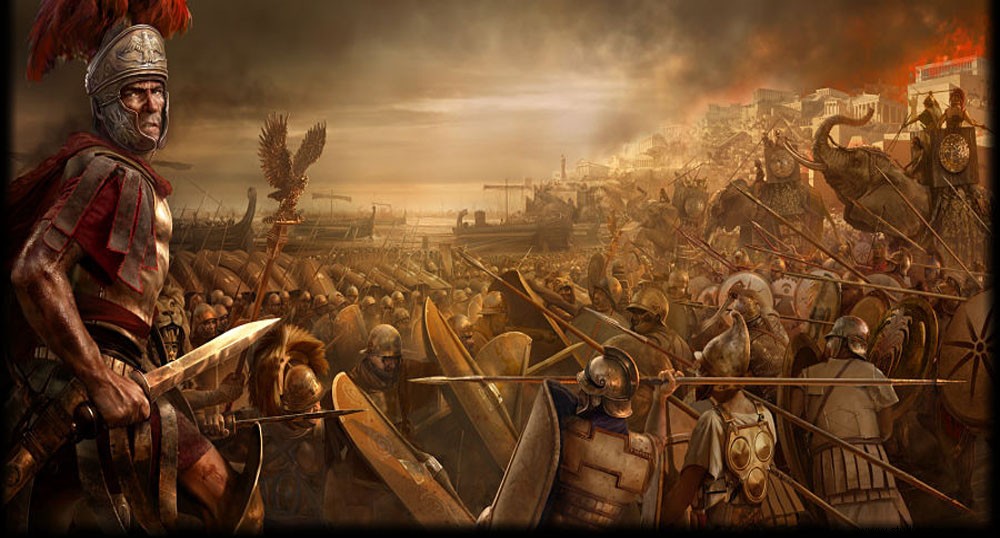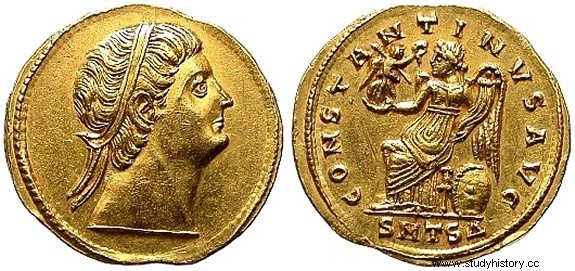During the Republic, an eminently agricultural society, the base of the legions was made up of free citizens who worked their land in times of peace and were recruited in times of war. But that part-time army model was clearly insufficient to attend to the innumerable and prolonged campaigns of conquest that Rome embarked on and to establish garrisons in the subjugated territories. So, the legions had to be reorganized to become a regular army. The first consequence was economic:those almost professional soldiers should have regular pay, the so-called stipendium (stipend). And where to get this new game? Well, it's better that others pay for it.

Stipend
If the eagles of Rome came to your territory, the council of the tribe in question had to meet to make a decision:sign a treaty or face the powerful legions. The best option, and the most complicated because it required some service previously rendered, was to obtain the status of Ciudad Liberae:you maintained your autonomous government and Rome did not require the payment of taxes. It wasn't too bad if you managed to become a foederati (ally), remaining independent in internal politics but dependent on the city in foreign affairs - Rome's enemies became your enemies and you had an obligation to provide auxiliary troops in case of loss. of war-. And if the opinion of the belligerents prevailed in the council... then war and, sooner or later, be conquered and become stipendiariae, remaining under the government of a governor appointed by Rome and having to pay tribute in the form of money, provisions or other services . The part corresponding to the tributes that was liquidated in currency, called stipendium, was used to pay the legionnaires who had conquered the territory. Logically, it was paid in denarios -etymological origin of “money ”-, the silver coin that was the basis of the monetary system of Rome.
Devaluation of the denarius
The denarius, weighing 4.5 grams and made of almost pure silver, began to be minted in the 3rd century BC, and from the very beginning it became the great protagonist of Rome's economic policy. Every time extraordinary financing was needed, taxes were raised and/or the denarius was devalued. As the value of the coin was determined by the metal used in its manufacture and its weight, to devalue the denarius it was enough to reduce the silver used in its manufacture and, therefore, its weight. In 145 BC the denarius weighed 3.9 grams and in Nero's time 3.41 grams. In this way, with the same silver, more coins could be minted and more spent. If we add to this that denarii also ceased to be pure silver, since silver was misused by mixing it with less valuable metals -in Caracalla's time the silver in a denarius hardly exceeded 50%-, we have the necessary ingredients for an inflation brutal.
Regardless of the devaluation decreed by the emperors, there was another devaluation typical of the picaresque of the countries bathed by the Mediterranean:that of the citizens themselves. As these coins were made of precious metals, the less favored people - those who did not get the circus and even less bread - scraped the edges of the coins and sold the metal filings after melting them. In fact, among the functions of the argentarii (the private bankers of the time) was to remove the deteriorated coins that, from so many hands through which they passed, had lost their weight and value. Today, some of our coins still bear the memory of the solution that was implemented to tackle this problem:putting ridges on the edges of the coins so that manipulation would be revealed to the naked eye.
Salary

Solidus
Logically, the successive inflations were creating discomfort among the population, especially among workers who were paid in denarii. And at the head of these workers, due to their number and importance within the empire, were the legionnaires who, in the fourth century, demanded to be paid in a more stable and reliable currency. To do this, the emperor Constantine I he was left with no choice but to mint a gold coin, the solidus , with which the stipend of the legions began to be paid. And in this way, the name of the new currency came to designate the periodic payment of the legionnaires and, later, of all those hired to do a job... our salary.
